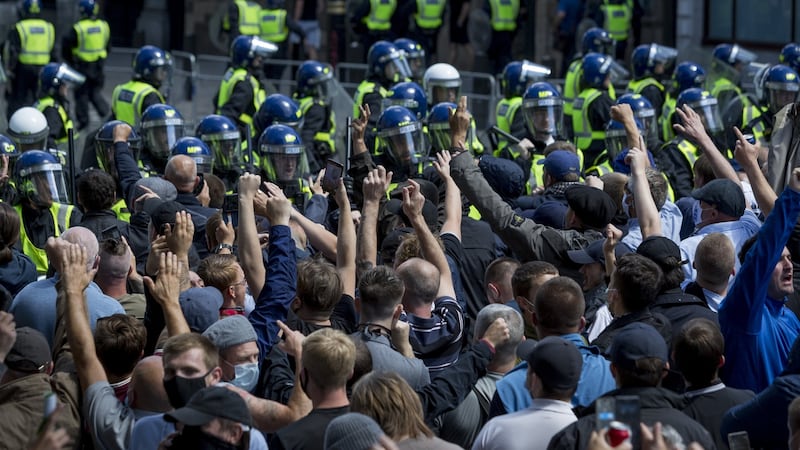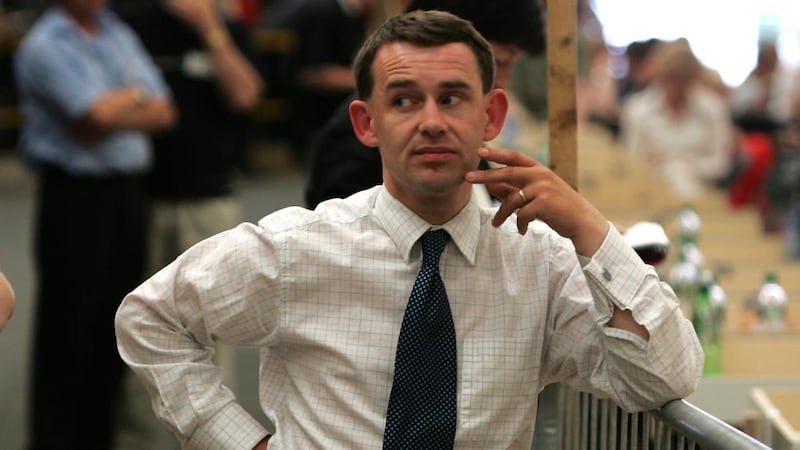For more than 20 years I've undertaken research on immigration and social change in Ireland. Much of this has focused either on how immigrants are faring or on how Irish society overall has changed. A lot of such work on the experiences of immigrants has focused on topics such as racism, barriers related to direct provision and the marginalisation of those who have settled here within many institutions, including the political system and the media.
My most recent research takes stock of Irish responses to immigration and considers what might be done through social policy, politics, citizenship and thinking about Irish identity to further immigrant integration and social cohesion more generally. It also engages with the rise to prominence of far-right parties and groups that oppose immigration, promote narrow definitions of Irishness and look for inspiration to populist nativist movements in other English-speaking and European democratic countries.
Ireland is by no means immune to the problems, discontents and perceptions of insecurity that have fostered anti-immigrant nativism in other countries. A lot has been written about the support for Trump in the US rust belt and about the similar appeal of far-right political parties in Europe's declining industrial areas. In the Irish case, anti-establishment populism has been mostly led by left-wing groups. None of these blamed immigrants for austerity. The attempts at anti-immigrant populism by far-right parties in advance of the 2020 election did not strike a chord with the electorate. An RTÉ exit poll conducted on the day of the 2020 general election found that immigration was the most important issue for just 1 per cent of respondents.
Research findings from other countries suggest that anti-immigrant nativism is more influenced by cultural anxieties than economic ones. An analysis by the political scientist Rory Costello of a Red C poll undertaken soon after the 2016 general election here suggested that a third of the electorate could be described as left-leaning when it came to economic issues but conservative on the cultural dimension, which is understood to include attitudes towards immigration. This echoed support for populist right-wing parties across Europe with precisely this combination of views. That study reflected that the party that was best positioned to exploit this gap in the Irish electoral market was Sinn Féin. However, Sinn Féin has not allowed itself to become identified with anti-immigrant nativism. In this context far-right groups have sought to corner the market on anti-immigrant nationalism while also seeking to appeal to social conservatives.
Liberal votes
Since independence, what became the Republic transformed from being a very religious and conservative society to a mostly secular and socially liberal one. The influence of Catholic conservatism on politics has declined as Irish people became increasingly secular and socially liberal. Conservatives and liberals are polarised in some similar ways in 21st-century Ireland to how these are in the United States. However, religious and conservative people in Ireland are now proportionally fewer and far less politically influential than liberals to the extent that the main political parties, which for generations courted conservative and rural voters, now mostly chase the votes of social liberals.
When considering where Ireland fits into wider 21st-century political trends that have seen the rise of nativism in some other democratic countries, it is worth reflecting on the history of Irish nationalism. This for two centuries oscillated between a constitutional version focused on achieving its goals through the ballot box and a militant one willing to engage in violence to achieve its aims.
Much has been made of the willingness of 21st-century national populists to undermine political norms and tear down institutions. But this has generally been mild stuff compared with the insurgency of successive waves of Irish revolutionary nationalists. Yet, nationalist rhetoric appears to be now far more intense in the UK than in the Irish case. This, perhaps, is because in the wake of the Troubles the consequences of such rhetoric have come to be understood by the Irish political mainstream as extremely dangerous. One of the reasons why the far right has remained a fringe movement is that most Irish politicians and many voters appear acutely sensitive to the dangers of invoking extremist nationalism.

Most successful
The most successful Irish far-right political party to date has been Ailtirí na hAiséirghe (Architects of the Resurrection), which was founded in 1942. It grew out of an Irish-language society Croabh na hAiséirghe (Branch of the Resurrection), whose membership, according to RM Douglas's history of the movement, included students from several universities, civil servants, members of the professional classes, a future chief justice of the Supreme Court, Seamus Ó hInnse (Henchy) and a few journalists, including the author Flann O'Brien's brother Ciarán Ó Nualláin. Other prominent supporters included Dan Breen, a celebrated IRA leader during the War of Independence, and Ernest Blythe, who had been minister for finance from 1923 to 1932.
Ailtirí na hAiséirghe proposed enforcing the use of the Irish language, by contrast with mainstream parties that paid lip service to this goal. It advocated a military invasion of Northern Ireland and printed posters with the slogan “Arm Now to Take the North”. The party had an estimated 2,000 members at its peak in 1945, but fell apart in the years that followed. It won nine seats in the 1945 local government elections These were on Louth County Council, Drogheda and Cork Corporations and New Ross, Cobh and Bandon District Councils.
Hugo Hamilton, in his memoir The Speckled People (2004), wrote about his father, an Ailtirí na hAiséirghe member and intensely committed Irish speaker and nationalist who married a German woman and who did not allow their children to speak English. The end of the memoir describes the author finding out about the anti-Semitic speeches his father used to give as an Ailtirí na hAiséirghe activist.
The closest present-day equivalent is the National Party, led by Justin Barrett. In the aftermath of the February 2021 anti-lockdown riot in Dublin, Barrett appeared in a YouTube video flanked by a photograph of Patrick Pearse and the Tricolour. Similar symbolism has been very prominent alongside anti-immigration speeches uploaded to social media by other far-right groups that position themselves as alternatives to Sinn Féin, somewhat similarly to how Ailtirí na hAiséirghe emerged to the right of Fianna Fáil, the once-conservative party founded by de Valera in 1932. The present-day far right appears to be consciously evoking the kind of Irish identity that prevailed several decades ago when Ireland was culturally and economically isolationist.

The Irexit outliers
A lot of attention has been given recently in the media to the extent to which supporters of the far-right are influenced by QAnon and conspiracy theories. However, it appears that far-right parties have sought to appeal to the kinds of once-centrist conservative voters who are no longer courted by the larger political parties. These include the substantial minorities who voted against repealing the Eighth Amendment in 2019 and opposed marriage equality in 2015 as well as the smaller percentage who show up in surveys as being opposed to Ireland's membership of the European Union.
It does not seem likely that a single-issue anti-immigrant candidate can get elected at present even if a few independent candidates have successfully exploited antipathy towards asylum seekers to increase their vote. However, the visibility of the far right in Irish politics is now hugely greater than that of black and ethnic minorities. As a result there is little representation within Irish politics of the diversity of Irish society. Ireland’s liberal and progressive mainstream parties have proved to be poor to date at reaching out to immigrant communities and at supporting candidates who reflect the ethnic diversity of Irish society. They also appear to have abandoned the kind of once-mainstream social conservatives that the far-right now seeks to enlist.
Bryan Fanning is professor of migration and social policy at UCD and author of Diverse Republic, published by UCD Press









